Founder and first-generation winemaker of Domaine Giudicelli: “Making wine requires serious commitment”.
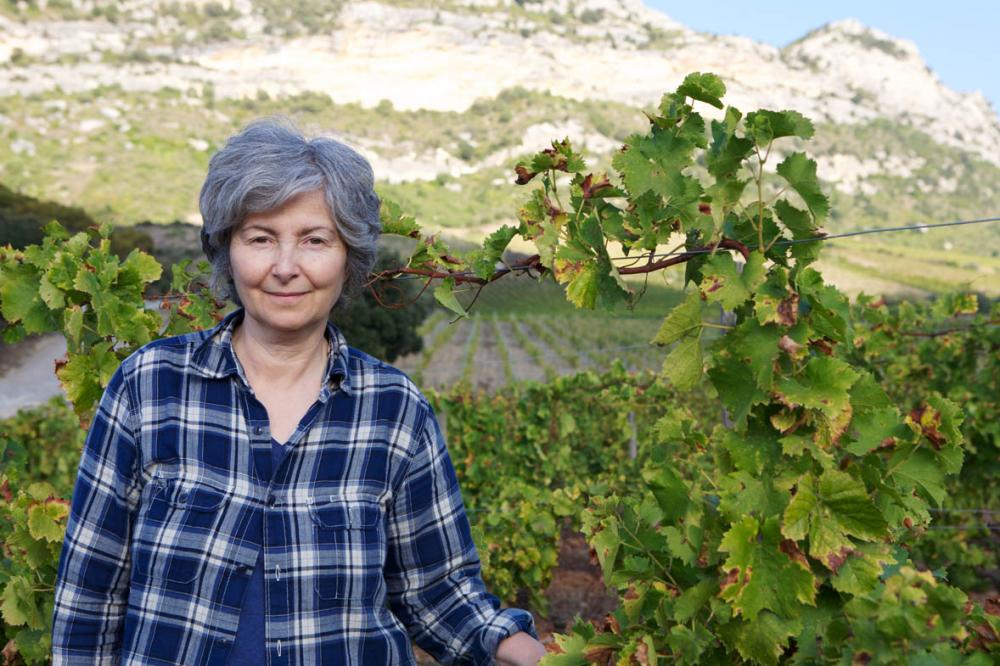
For the fourth in Le Figaro Vin’s series, we cross the water to Patrimonio, in Corsica, where Muriel Giudicelli, #47, creates her exquisite island wines. Here she shares her journey as a self-taught winemaker, on land she cherishes with a deeply-felt love.
Le Figaro: How does it feel to be crowned a winemaking champion?
Muriel Giudicelli: I am very proud for my appellation and for raising the profile of Patrimonio. I am a first-generation winemaker in Corsica, not a Corsican by birth. I want to play my part as an ambassador for this splendid terroir.
Have you been training for long?
From the age of thirteen! I have always been in it for the long haul. Wine was a shared family passion, which gave me an early appreciation of it and spared me the messy pitfalls of adolescent drinking.
Who is your mentor?
My parents, who were engaged in a continual tug of war. My father was on team Bordeaux, my mother team Burgundy. So I was the fortunate beneficiary of a double initiation, even if I have to acknowledge that Burgundy won out.
Is wine a team sport?
Yes, absolutely, as embodied in our estate: my husband takes care of the vines while I take care of the wine. And our team is soon going to get bigger, as our children are joining us. That makes me very happy and it will keep our egos in check.
What is the key to making a good wine? The terroir or the winemaker?
The terroir. A great winemaker can make a decent fist of inferior terroir but never a great wine. On the other hand, on good terroir, even a poor winemaker given a fair wind, who sits back and largely lets nature take its course, has a chance of producing something good.
To what do you owe your success?
I was lucky to love cooking, combining the right ingredients with a good sense of taste, without ever following recipes. I use the same process in my cellar. While my daughter is studying cookery, I don’t think that studying viticulture and oenology is essential, because you are always having to unlearn what you have learnt. In order to make wine you need to know how to taste, think ahead creatively, and, above all, make the best of what you’ve got. It all comes down to balance.
Are your parents proud of you?
Yes, very proud. They are great wine lovers. That said, my father is completely partisan. Even when my first efforts at winemaking were dreadful, he was full of praise. My mother, who taught in primary schools, has a discerning palate and strictly objective standards. As a result, she is far harder to please. When she tells me that a wine is “not bad”, that’s a real compliment.
Your favourite colour?
Red. Because it’s hard to mess up a white wine in Patrimonio.
The king of grape varieties?
Niellucciu (a red grape variety native to Patrimonio, ed.). It has the temperament of a Corsican, so you need to handle it with tact and diplomacy. You must always take pains to understand it. I didn’t understand it when I started, so that drinking my wines was truly like scaling your teeth.
Your favourite wine?
A blend of Niellucciu and Sciaccarellu, which comes out in 2024. Its name will be Terra Ros (Red Earth, ed.) because the vines are rooted in red clay soil.
Your favourite vintage?
2016, for both reds and whites.
If your wine was a person, who would it be?
I hope it is like me.
What are the best circumstances in which to taste your wine?
Among friends around a good meal. The psychological factor plays a big part in tasting, perhaps even more than the wine itself.
Have you ever thought about chemically enhancing yourself, or your wine?
I used additives when I started, not knowing how to vinify. I was all over the place, trying out different concoctions, which is why I want to spare my children from making the same mistakes. It was truly sad, I was hopeless.
For what price would you be prepared to sell your estate?
The question has come up, because there was a long period when my children didn’t want to take it on. But we could never bring ourselves to fix a price, because of our visceral attachment to our land. I cannot put a price on it.
Who is your strongest competition in Corsica?
Rather than a competitor, it is someone who has been much more a mentor. Antoine Arena’s opinion really matters to me and he was the person who helped me get established. I think that, by now, I have earned his approval, which is a big thing, because he has an overall responsibility for the appellation. I would hate to disappoint him. He is something of a spiritual father to me.
What has been your most innovative strategy in the vineyard and in the cellar?
A battle I won with myself. I had some pretty fixed ideas when I started and didn’t believe in temperature regulation. Although I remain convinced that it’s a heresy in the case of white wines, I was forced to use it to deal with a micro fungus which affects the vines we use for my reds. This has required maintaining a temperature of around 25°C. I now realise that this has greatly improved the tannin extraction. It has markedly changed the profile of my reds.
Who would be your ideal successor on the podium?
I hope it will be my children. They have learnt that making wine is not just about having fun; it’s a serious business, which requires serious commitment. It is also a commitment to the appellation.
The worthy successor to his grandfather and father on an estate that produces some of the greatest Rieslings of Alsace: “Being a winemaker is not about measuring performance”.
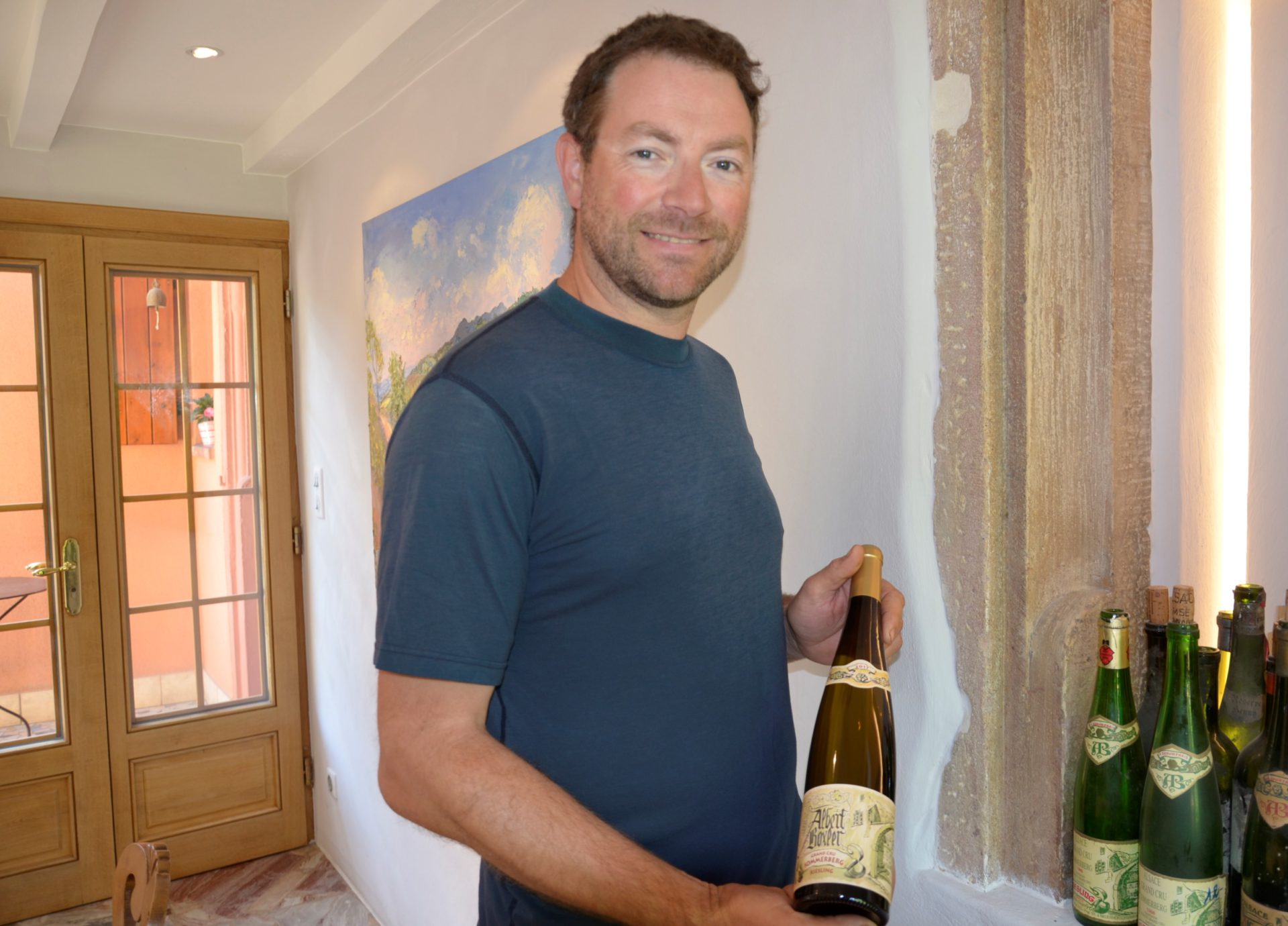
For the second in Le Figaro Vin‘s series of the 50 best winemakers in France we head off to Alsace, where we meet Jean Boxler, #49. He embodies the latest generation of an iconic Alsace estate, whose grands crus are equally seductive for lovers of natural wines and for the most sophisticated palates.
Domaine Albert Boxler is a family property, founded in 1672, on the hillsides of the Upper Rhine commune of Niedermorschwihr. Having worked side by side with his father for 25 years, Jean Boxler pursues his craft with the artistry of a goldsmith, producing wines of exceptional finesse on terroir known, nevertheless, for being extremely harsh. With great wisdom, despite his relative youth, he reveals his vision of a vocation which is based, for him, on passion, resilience, and sensitivity.
Le Figaro: How does it feel to be crowned a winemaking champion?
Jean Boxler: There are no champions. Being a winemaker is not about measuring performance but something far deeper and far less tangible. When you choose to do this job, you should not aspire to be the best. You must simply love your vines and try to do your work with as much sensitivity as possible.
Have you been training for long?
I started in 1996, so I have 26 vintages under my belt. At the same time, each year feels like my first. I attempt to refine things year by year, to avoid acting impulsively, and to focus on quality. Just as in sport, it is practice that allows you to manage the difficult times and cope with the random contingencies, and it’s precisely the charm of the unpredictable that makes life interesting.
Who is your mentor?
My father (who passed away in November 2022, ed.) and, until I reached 17, my grandfather. They taught me my passion for the job.
What is the key to making a good wine? The terroir or the winemaker?
You need a winemaker to make good wine. But it takes both to make a great one.
To what do you owe your success?
I am not sure whether success can be measured by any specific criterion, as I don’t like to be pigeonholed in a particular style. I think that wine involves something more conceptual. First and foremost, wine is a social bond. In current winemaking talk I notice a kind of radicalisation in the approach to production methods, sometimes to the detriment of the wine. Sadly, that creates a disconnection from the true purpose of production. There is no rule book for making good wine, rather there are different ways of getting there. The secret of success is therefore more to do with passion, conviction, and self-denial, which invariably end up paying off.
My parents and grandparents had a certain style, taste, and a concern for balance and simplicity, combined with a desire to produce grapes of exceptional quality, without ever resorting to cutting corners or to technical excess. Our success is measured by the loyalty of our customers, some of whom have enjoyed our wines for over 30 years. That has given us our greatest satisfaction; we make wines that we like to drink.
Is your family proud of you?
It’s not a subject that we ever touch on. My father and I shared our passion for wine, day by day, for 25 years. He was my best guide. We never spoke about pride but about wine and nature.
Who are your best supporters?
I would say our American importer from the 1980s, Robert Chadderdon. It was a serendipitous meeting, with an outstanding taster, and we were on the same wavelength. He had a great deal of respect for our work.
Red or white wine?
I have a soft spot for Rieslings, so it’s whites. But balance, emotion, and vibrancy are what I look for most of all.
The king of grape varieties?
Riesling. It is complex, has a lot of character, and is completely uncompromising. It perfectly reflects how you nurture it. It is incapable of hiding its feelings. This is no doubt down to our transparent terroir, with its crystalline granite soils on which Riesling is an open book. Riesling combines great purity with great candour.
Your favourite wine?
The Riesling Sommerberg Grand Cru “E” (lieu-dit Eckberg).
Your favourite vintage?
2017, which was a complete vintage across the spectrum. Otherwise, no doubt, 2023!
If your wine was a person, who would it be?
A wine is made in its maker’s image
What are the best circumstances in which to taste your wine?
When you are relaxed.
Have you ever thought about chemically enhancing yourself, or your wine?
No, because winemaking is not a competition. Everything depends on being able to mitigate any defects by making the right decisions, especially during the harvest. By keeping tuned into your plots, your work is already done. Doping and comparable interventions are an admission of failure. Their consequence is that your wine can never achieve greatness.
For what price would you be prepared to sell your estate?
I have three boys, two of them interested in winemaking, so the question does not arise.
Who is your strongest competition in Alsace?
Probably Gérard Schueller, even if his son Bruno has gone down a different route. The father’s wines were monumental.
Which competitions do you dread the most?
The harvest. It is, at once, the most beautiful of times and the most anxiety-inducing, because you have to manage the human, the climate, and the condition of the vines. I would say that the greatest challenge today, because of the climate, is the fear of destabilisation.
What was your greatest win?
Passing on my love of winemaking to the next generation.
What has been your most innovative strategy?
Understanding how to work with people. Wine is a team sport.
Who would be your ideal successor on the podium?
My sons.
The technical director revolutionising Pomerol’s Château L’Évangile: “If my wine was a person, it would be Catherine Deneuve”.
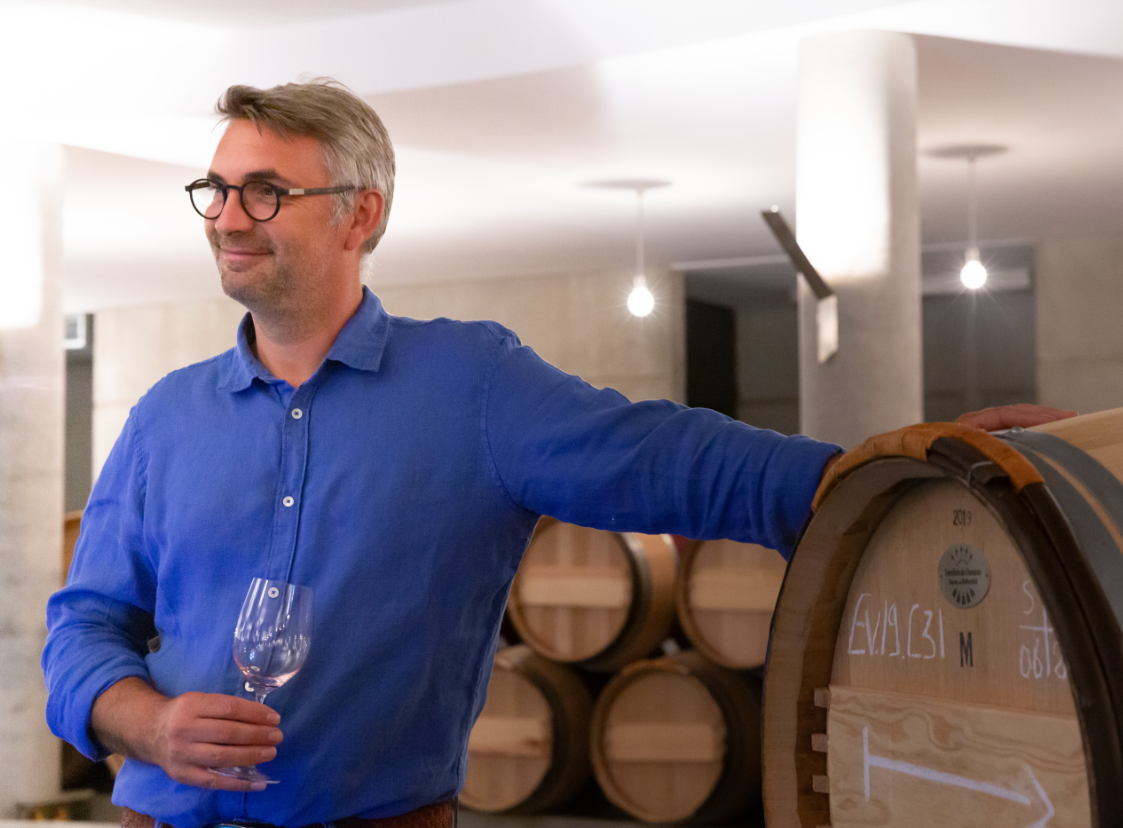
Wine Lister’s parent company, Le Figaro Vin, has launched its inaugural series of the 50 best winemakers in France in 2023. Interviews with each winemaker making the top 50 will be published throughout the course of the year – in French on the Le Figaro Vin website, and in English on Wine Lister’s blog. The first in the series, #50, is Olivier Trégoat – Technical Director of Pomerol’s Château L’Évangile. Here he shares the highlights of his viticultural journey so far. In just a few years, Olivier Trégoat has managed to realise the full potential of l’Évangile, getting the most out of the appellation’s natural generosity, while reinstating a remarkable freshness in the wine.
Le Figaro: How does it feel to be crowned a winemaking champion?
Olivier Trégoat: I am very happy, but give most of the credit to the team, as it is, above all, a real collective effort. Alone, I would be good for nothing.
Have you been training for long?
Yes, I’ve been training since 1997. Everything I’ve done in my previous winemaking roles contributes to what I have achieved at L’Évangile. I got my start in Saint-Émilion, which catalysed my interest in soil studies – while my previous job as an independent consultant for large Bordeaux estates (including Château Cheval Blanc) was invaluable.
Who is your mentor?
At the start of my winemaking journey, it was Kiss Van Leeuwen, a viticulture professor at Bordeaux Sciences Agro and the Institute of Vine and Wine Sciences (ISVV). Today, my mentors are my neighbours in Pomerol – whose proximity prevents me from making mistakes and provides me with constant inspiration.
What is the key to making a good wine? The terroir or the winemaker?
The terroir. For me, climate and soil make up 80% of the wine.
To what do you owe your success?
To my education, my curiosity, and the tools at my disposal – a triptych of soil, vine, and wine.
Is your family proud of you?
Yes, I’m sure they are.
Who are your best supporters?
Paradoxically, some of my competitors, but also my former clients from when I was an independent consultant.
Red or white wine?
The older I get, the more white wine I drink!
The king of grape varieties?
Cabernet Franc. At Château L’Évangile, it’s a grape variety that we will continue to plant and conduct research into – particularly because of its freshness. And also because I love the wines of the Loire Valley!
Your favourite wine?
Château L’Évangile 2006. It is a harmonious vintage that offers the delicate touch of l’Évangile’s hallmark tannins, alongside a more fleshy characteristic – but without excess, and still retaining a beautiful freshness.
Your favourite vintage?
2011 – something slightly different. It was not well understood around the time of its release, and it came after 2009 and 2010, which were widely-recognised as exceptional vintages. It’s just starting to open up today.
If your wine was a person, who would it be?
Catherine Deneuve. A great, timeless actress who knew how to challenge herself in different roles.
What are the best circumstances in which to taste your wine?
Drink it with people you love.
Have you ever thought about chemically-enhancing yourself, or your wine?
No, never. Nature is generous in Pomerol; I always say that I have my foot on the brake rather than the gas.
Who is your strongest competition in Pomerol?
Château Lafleur.
Which competitions do you dread the most?
Frosty periods in early April.
What was your greatest win?
I had beginners’ luck. My entire career in wine so far has been a bit like a race in which I have ended up on the podium against all odds!
What has been your most innovative strategy?
While we do things in a very simple manner in the winery, in the vineyard, we make very rigorous intra-parcel selections on different soils. I sometimes say that we harvest in a Sauternes style. We love to split hairs during this critically decisive period. It’s a real challenge to be a winemaker in Pomerol today.
Who would be your ideal successor on the podium?
On the podium, Château Lafleur. They are very sharp and precise in what they do, with consistently good ideas. And for my successor at the estate, I don’t know yet…
A few words about the estate:
The property was founded in the mid-18th century under the name “Fazilleau”. At the beginning of the 19th century, the Léglise family, who played a significant role in expanding the vineyard, sold it to a lawyer named Isambert, who renamed it L’Évangile. He expanded the estate to around 13ha – not far off its current size.
Since 1990, Château L’Évangile has been under the helm of Baron Éric de Rothschild, who also owns Château Lafite in Pauillac (among others in the appellation), as well as Château Rieussec in Sauternes. His daughter, Saskia, a former New York Times correspondent writing from the Ivory Coast, and the author of a novel, joined her father in Bordeaux in 2017. The estate has benefitted from significant investments, as well as the technical expertise of the Domaines Barons de Rothschild (Lafite) teams for over 30 years. Juliette Couderc was appointed Chief Operating Officer in 2020, having previously managed the vineyards of Chinese estate, Long Dai, which also belongs to the group. She works alongside Olivier Trégoat.
As the year draws to a close, Wine Lister has published its 2022 Wine Leagues – the third of our annual reports celebrating the top-performing wines and producers within several categories over the past year. The Leagues reveal exciting developments in the world of fine wine, shining a light on consumer trends and estates on the rise, informed by an in-depth trade survey with key industry figures.
Please see some of our key findings below, or click here to download the full study.
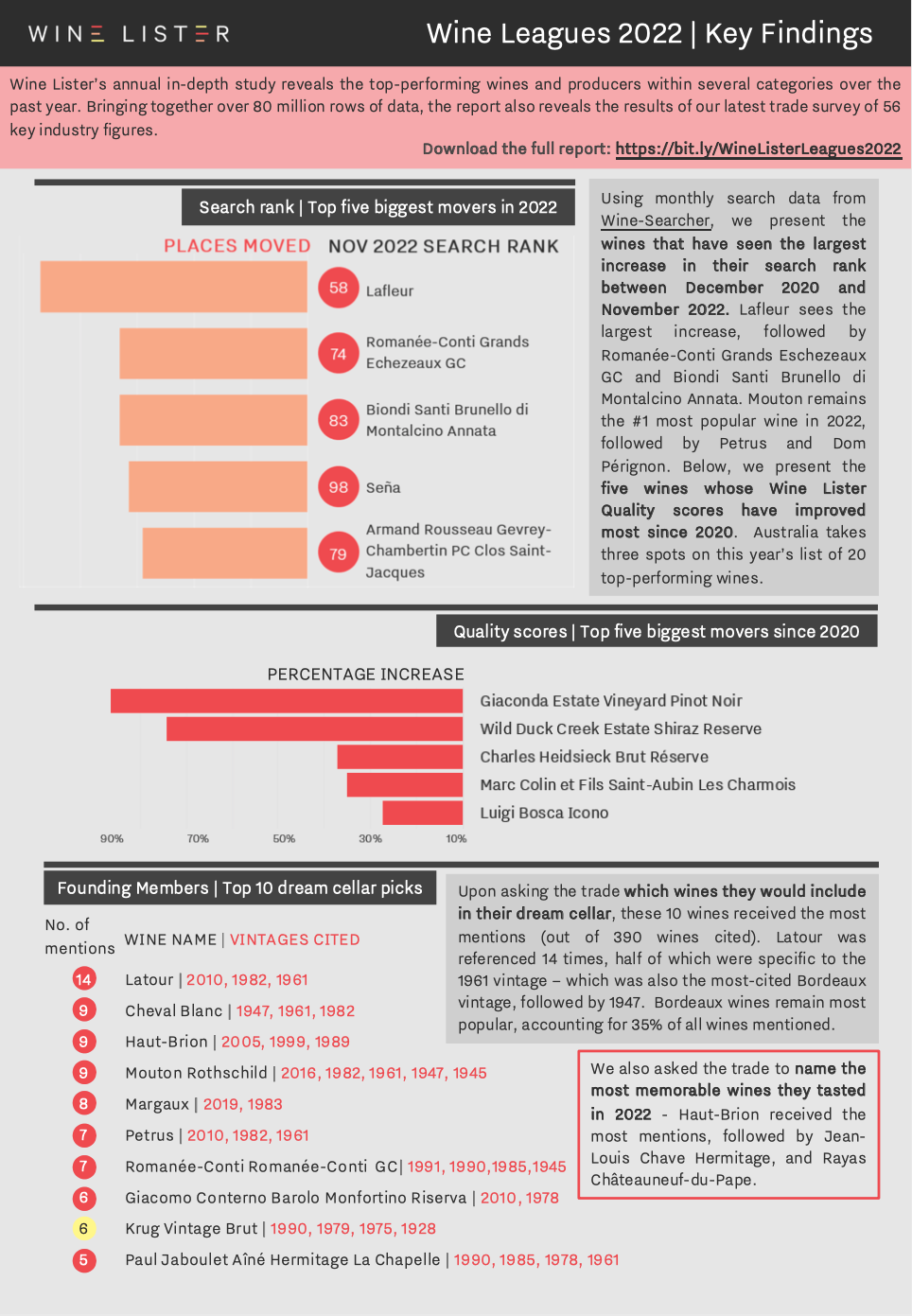
With a bank of knowledge on some of the world’s most delectable wines, sommeliers have the ultimate insider insight into which bottles are worth picking up. With this in mind, Wine Lister asked some of the world’s top sommeliers to share with us their favourite wines retailing for under £35 per bottle.
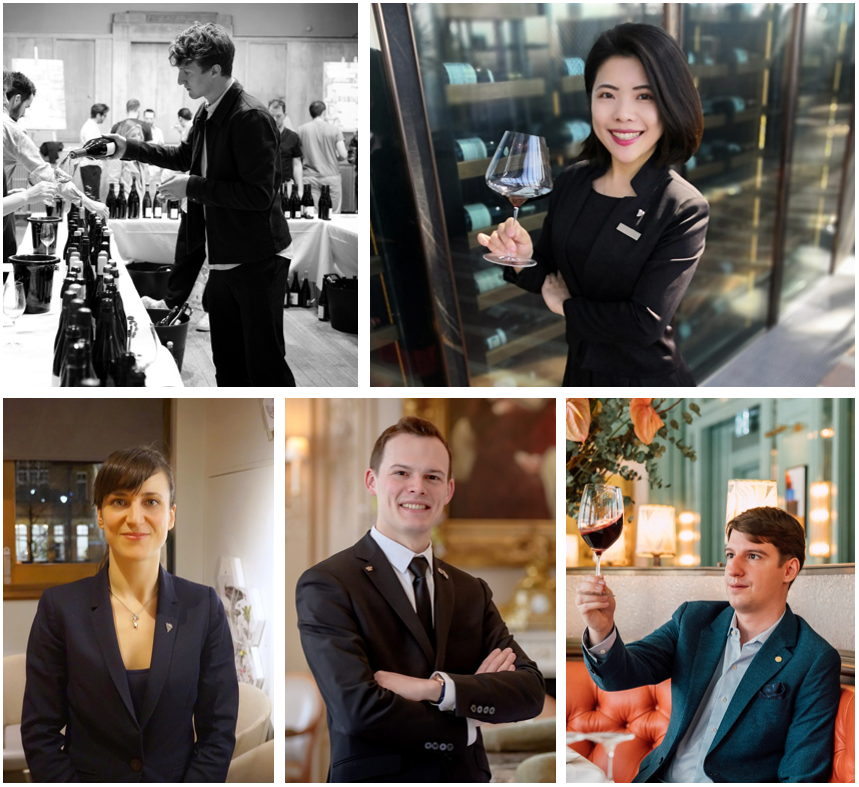
Clockwise from top left: Joshua Castle (Noble Rot), Lesley Liu (Odette), Marc Almert (Baur au Lac), Martin Jean (Domaine les Crayères), Sara Rossi (Trinity)
Joshua Castle (Noble Rot, London)
Joshua contends that “without a shadow of a doubt, Greece is producing some of the best value-for-money wines”, noting that “the most successful producers are tapping into the country’s long viticultural history, wealth of old vines, and indigenous varieties”. He cites white wines produced from grapes such as Robolla, Roditis, and Savatiano “have been a huge success in the UK on-trade” while his pick his for “a great-value Greek wine is the red Agiorgitiko ‘Natur’ from Tetramythos, a producer based in the Peloponnese”. “Acidity, fresh flavours, and light extraction are on the agenda”, according to Joshua, who admires winemaker Panagiotis Papagiannopoulos’ tempering of Agiorgitiko’s often tannic profile – resulting in a bright crunchy expression. “I first drank it at the fantastic central Athens wine bar ‘Heteroclito’ where its energetic fruit, moderate alcohol, and glou-glou style has me hooked.”
Agiorgitiko ‘Natur’ 2021 can be found in Noble Rot’s London wine shop, Shrine to the Vine, for £17 per bottle
Lesley Liu (Odette Restaurant, Singapore)
Lesley recommends a Torrontés, citing how well it compliments the tropical climate of Singapore with its refreshing minerality and “lingering floral and sweet notes of delicate exotic fruit, fleshy citrus, and wild honey”.
Lesley is particularly impressed by the barrel-fermented Torrontés produced by Susana Balbo – the first woman in Argentina to graduate with a degree in oenology. Lesley describes it as “a new chapter for Torrontés”, due to the complexity imparted by the French oak barrels – “an unusual choice for aromatic varieties”. She commends the versatility of the grape, which lends it to being a great match for all manner of Asian dishes as its “acidity can cut through the oil present”.
Susana Balbo Signature Barrel Fermented Torrontés 2019 can be found in Roberts and Speight from £18 per bottle.
Marc Almert (Baur au Lac, Zürich)
Marc points to the wines of Côtes du Rhône for “some of the true best-buys in French wine”, and advocates looking beyond the big-name appellations such as Châteauneuf-du-Pape and Côte Rôtie, and instead towards smaller regional appellations which “often offer great ‘bang for your buck’, whilst displaying a sense of terroir”.
Marc recommends the Mistral Domaine de Ferrand. “The Bravay family named this highly-quaffable entry into their portfolio after the namesake northwesterly wind which is key to Rhône Valley viticulture.” He praises its palate, which boasts “a rich array of violet, spice, and of course dark red fruits” and says that “it possesses a great acidity back-bone, soft tannins despite its youth, and is the kind of red wine I like to enjoy after a long service.”
Mistral Domaine de Ferrand 2020 is available from Hedonism Wines for around £19 per bottle.
Martin Jean (Domaine les Crayères, Reims)
Martin shares a recent favourite from a blind tasting with friends – “a sommelier friend had brought the Jaspe 2016 cuvée from Dominique Hauvette. It was a real favourite during the tasting, and something that I would want to share around a barbecue, with some grilled spiny lobster, decorated with some Provençal tomatoes, and an eggplant pie – simple dishes to share with family and friends.”
Martin praises this biodynamic, Roussanne-dominated cuvée for “its balance, its vibrancy, and saline notes”.
Domaine Hauvette ‘Jaspe’ 2016 is currently difficult to find in the UK, but can be found in outlets abroad such as Terroirs in Dublin from around £34 per bottle (excl. shipping).
Sara Rossi (Trinity Restaurant, London)
Sara has always been “fascinated by Slovenian wines because of their unique style and personality”. She particularly recommends Cotar Terra Rossa, a blend of Teran, Merlot, and Cabernet Sauvignon, describing its “delicate aromas of violet, sour red cherries, rosemary, and sage”. Sara praises its “refreshing acidity and firm tannins”, as well as its “long and complex finish”. Her ideal pairing for Terra Rossa would be “homemade truffle linguini pasta or roast grouse”.
Though currently unavailable in the UK, Cotar Terra Rossa 2009 can be found in European retailers such as Germany’s Vinoteca Maxima from £22 per bottle (excl. shipping).
The Place de Bordeaux’s 2022 September campaign has seen its third week of releases, with a number of key entries including the likes of Pym Rae 2018, Dalla Valle Maya 2019, and Château Palmer 2012.
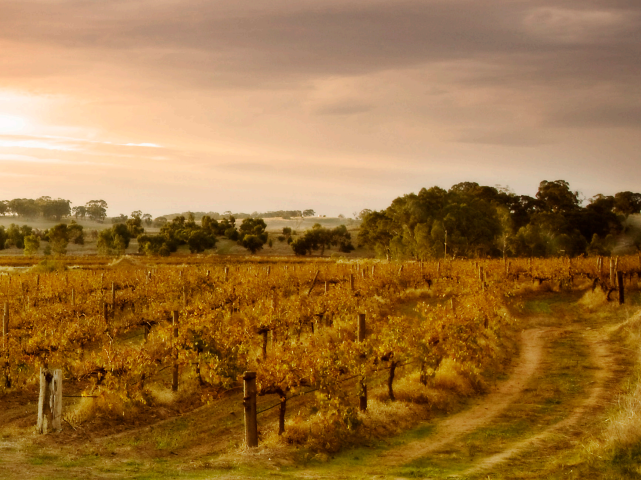
The Armagh vineyard in autumn
Following a UK bank holiday on Monday to mark the funeral of Queen Elizabeth II, Tuesday 20th September morning saw several releases in quick succession, starting with Pym Rae 2018, which entered the market at a recommended retail price of £270 per bottle. Tasting at the CVBG Beyond Bordeaux London event earlier this month, Wine Lister’s Founder and CEO, Ella Lister found this vintage to be a real step-up from the Tesserons’ Californian outpost, awarding the 2018 96 points and noting “exceptional balance, the texture of taffeta, and an addictive softness”.
Another standout release, Telmo Rodríguez’s Yjar saw its second ever vintage – 2018 – released through the Place at £95 per bottle (in-bond). Tom Parker (tasting for jancisrobinson.com) awards a score of 17, while Ella scored 96 points, comparing its balance to that of “a ballet dancer, toned and delicate”, noting that it is “the perfect wine for today’s palate”. The 2018 vintage saw a production volume of just 6,000 bottles – a reduction of 1,000 bottles compared with the 2017.
The Armagh Shiraz 2018 was also released on Tuesday at £165 per bottle (in-bond), with Ella awarding 95 points and describing the latest offering from Jim Barry as “rich and opulent” – a vintage “worthy of the 50 years since the first Shiraz was planted at the domaine in 1968”.
Wednesday 21st September saw the release of Le Petit Cheval Blanc 2020, which entered the market at £100 per bottle (in-bond). It was shortly followed by Giovanni Rosso Barolo Ceretta 2018, released at £51 per bottle (in-bond). Walter Speller (for jancisrobinson.com) awards the latter a score of 17++, describing it as “simply gorgeous” and praising its “beautifully sculpted chewy tannins”.
Next up on Wednesday, Dalla Valle Maya 2019 was released at £464 per bottle (in-bond), marking the first vintage produced since the estate committed fully to biodynamic practices. Another first – Château Haut-Batailley introduced its 2016 vintage to the market at £36.67 per bottle (in-bond). A transitional year, the Cazes family acquired the estate shortly before the 2016 primeurs and oversaw blending, while vinification had been carried out by the previous owners (the Borie family) – provoking the decision to withhold its release. The 2016 bottle features a transitional label – neither the previous label under the Borie family, nor the new label under the Cazes family, debuted in 2017. Neal Martin (for Vinous) awards the 2016 94 points, calling it “an outstanding Haut-Batailley”.
Château Palmer released ex-château stock of its 2012 vintage on Thursday 22nd September, the third vintage to be released from the estate’s “Ten years on” series. Since 2010, approximately half of each year’s production has been reserved in the cellars, while the remaining half is sold en primeur. The 2012 vintage was released at £257 per bottle (in-bond), having achieved scores of 17 from Jancis Robinson (for jancisrobinson.com) and 94 from Antonio Galloni (for Vinous).
Also released this week were Cobos 2019 and Clos des Goisses 2013.
Likely to be released next week are Kracher Tba N°5 Grande Cuvee 2019c, Château d’Avize 2012, Morlet Cœur de Vallée 2019, Allegrini Fieramonte 2015, La Poja 2017, and Biserno 2017.
Amongst other findings, Part II of Wine Lister’s annual Bordeaux Study, ‘Walking the tightrope’, explores the outperformers of the latest vintage – the top 15 wines whose Wine Lister Quality score (part of our Pro rating system) in 2021 most exceeded their wine-level average. The wine-level average is calculated based on a mean Quality score over the last five vintages, to reveal more recent trends. Seven of this year’s outperformers were also featured in the 2020 list, indicating that these wines continue to build long-term quality in 2021.
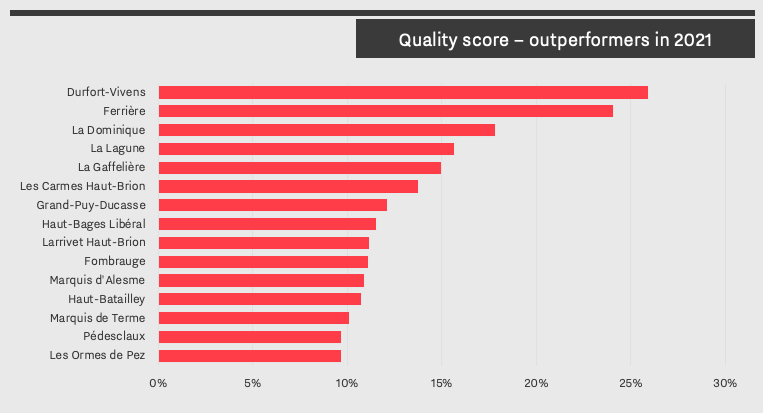
Quality score – outperformers in 2021 (as featured in Part II of our 2022 Bordeaux Study)
Four Margaux wines feature in the 2021 outperformers chart, with Durfort-Vivens this year taking the top spot from Ferrière. Receiving a score of 92-94 from Ella Lister (for Le Figaro Vin), she describes it as “Effervescent with energy and life […] with an impressive density, and a generous future ahead of it.”
New additions to the outperformers chart this year, Marquis d’Alesme and Marquis de Terme rank in 11thand 13th place respectively. As well as appearing in our list of Bordeaux 2021 Value Picks (wines with the best quality-to-price ratios), the latter earns the status as the Bordeaux red with the biggest increase in 2021 Quality score compared to the 2020 vintage (also explored in Part II). Antonio Galloni for Vinous awards Marquis de Terme 2021 its highest ever potential score from the critic platform, 93-95, calling it “inky, vibrant, and super-expressive”.
La Lagune returns to the 2021 chart in fourth place, down from third in last year’s study. James Lawther (JancisRobinson.com) calls the 2021 “pure and precise”. The estate has been certified organic since the 2016 vintage and is currently working towards biodynamic certification.
Pauillac also sees four wines on this year’s outperformers chart, with Grand-Puy-Ducasse, Haut-Bages Libéral, Haut-Batailley, and Pédesclaux showing strong improvements in Quality score in 2021. Awarding a score of 92-94, Antonio Galloni notes that Grand-Puy-Ducasse “has made important strides of late”, given the increased investment under the direction of Anne Le Naour, while Pédesclaux has also seen significant investments from proprietor Jacky Lorenzetti.
Saint-Emilion brings three wines to the 2021 outperformers chart, with Fombrauge entering the outperformers chart in 10th place, and La Dominique overtaking La Lagune to occupy the third spot. La Gaffelière has also increased its standing on the chart, having climbed six places from 11th place last year, and achieving its highest ever Wine Lister Quality score in 2021.
Les Carmes Haut-Brion continues its upward trajectory in 2021, receiving a score of 17++ by James Lawther (the highest score given by the JancisRobinson.com team since the 2015 vintage), and gaining Ella Lister’s top score for the vintage (96-99 points). Larrivet Haut-Brion enters the outperformers chart in ninth place, with the estate deciding not to include any Merlot in their 2021 blend – a first in Bordeaux.
Also appearing on our list of Value Picks for the 2021 vintage, Les Ormes de Pez rounds off the list of outperformers, having received a score of 91-93 from Neal Martin (Vinous), who calls it “A stylish Saint-Estèphe”.
For the full list of Wine Lister’s top 20 Value Picks for Bordeaux, as well as further analyses of the region’s performance on Quality, search data, auction activity, and short-term price performance, download Part II of Wine Lister’s 2022 Bordeaux study here.
Wine-Searcher is the world’s largest wine and spirits search engine, handling 250 million searches from around the world each year. This year, as part of Wine Lister’s annual Bordeaux study (Part II), we include data from Wine-Searcher exploring compound annual growth (CAGR) by Bordeaux appellation, average offers on Wine-Searcher by appellation, vintage, and geography, and average monthly searches by appellation and search location.
“There have been some subtle (and not-so-subtle) changes over the past year”, observes Wine-Searcher’s Editor, Don Kavanagh. “While Bordeaux still dominates both search and offer numbers, interest appears to have fallen slightly in relative terms.”
Bordeaux’s offer count on Wine-Searcher
Though Bordeaux is still the major player on the world stage, with the highest total share of search activity of all major wine regions, its growth in rate of search is showing signs of being outpaced.
Searches for all wines over the past 12 months increased from 188 million to 205 million, slightly faster than searches for Bordeaux wines (up by 3 million to 39 million) during the same period.
Similarly, Bordeaux is not benefitting from the overall growth in offers on Wine-Searcher, which have risen from 6.8 million to 6.9 million over the last 12 months. Indeed, Bordeaux offers have shrunk slightly, from 791,000 to 786,000. Not all Bordeaux appellations were equally affected (see graph below).

Average offer count per wine by appellation and merchant location, January – April 2022
During the first four months of 2022, there was a 6.7% contraction in offers from Europe (excluding the UK), with an even steeper reduction in offers from the UK and Asia, at 11.5% and 12.1% respectively, when compared with the same period in 2021. The USA’s number of monthly searches, as explored above, map neatly onto its increase in monthly offers per appellation (6.3% once again).
Search count by Bordeaux appellation and geographical location on Wine-Searcher
Search activity varied by geographical location in the period from January to April 2022, in comparison with the same period in 2021. While searches for Bordeaux appellations from the UK, Asia, and Europe (excluding the UK) decreased, the USA saw a 6.3% increase in search activity.

Average search count per wine by appellation and user location in 2022 (January – April)
Bordeaux’s price growth by appellation on Wine-Searcher
There are causes for optimism; growth with respect to global average prices (measured as a compound annual growth rate, or CAGR) in the period 2017-2022 has continued. The leader of the pack among Bordeaux appellations in this regard is Pomerol, reaching 6.1%. Even the lowest CAGR, exhibited by Saint-Emilion and Margaux, is 4.3%.
The year 2020-2021 remains an exception; compound annual growth rates jumped by 10% across all the examined appellations in that year.

Compound annual growth by appellation, 2017 – 2022
The strength of the region’s compound annual growth rate is perhaps linked to the sharp decline in overall offer activity beginning in 2019, as compared with the longer-term average. While overall offer activity began to decrease, the proportion of offers between each appellation remained relatively stable in the period 2014-2020.
To view the full Wine-Searcher insert in Wine Lister’s annual Bordeaux study, and uncover more of Wine Lister’s analysis of the Bordeaux’s standing in 2022 – including quality scores, short-term price performance, and auction activity, as well as the topics discussed above – download the full report here.
Following a French national holiday on Monday 6th June, this year’s Bordeaux en primeur releases have picked up momentum this week, with new entries from the likes of Lafite, Troplong-Mondot, Canon, and Rauzan-Ségla over the past two days.
The first of the Firsts was released on Tuesday 7th June, with Lafite 2021 entering the market at £484 per bottle – below every single back vintage on the market, and 19% and 27% below the current price of the 2020 and 2019 vintages respectively. The latest release is made from 96% Cabernet Sauvignon – the highest percentage since 2016 (and 1961 before that). Domaines Barons de Rothschild sibling, L’Evangile, also released on Tuesday at £185 per bottle (flat on the 2020 release price), having been met with positive feedback from several trade members during tasting week.
Troplong-Mondot 2021 released at £71 per bottle (1% down on the 2020 release price). Tasting at the property, Wine Lister was reminded by CEO, Aymeric de Gironde that 2021 was the first vintage of Troplong-Mondot made in the estate’s new 42-cuves-strong cellar, which de Gironde said “was perfect timing, as we no longer had to make any winemaking compromises”.
One of the Wine Lister team’s favourite wines from tasting week, Montrose 2021 entered the market on Wednesday 8th June at £113.40 per bottle, with the latest release marking the property’s first year of organic conversion. Technical Director, Vincent Decup, told us, “We have never done so much [in the vineyard]. To compensate for the rain, we have left more grass between the vines, trimmed higher, thinned the leaves on both sides”.
Canon 2021 was also released on Wednesday at £90 per bottle, offering a 32% and 22% discount on the current market prices of the 2020 and 2019 vintages respectively. Canon ranks in sixth place for top confidence ratings from key international trade members, (see more in Part I of Wine Lister’s Bordeaux Study 2022), as shown in the chart below.

Chanel sibling Rauzan-Ségla 2021 followed suit, entering the market at £60 per bottle (14% and 27% below the current 2020 and 2019 prices). Managing Director, Nicolas Audebert told Wine Lister that 2021 was “the most stressful and exhausting vintage ever” at Rauzan-Ségla, though he believes the 2021 is “as good as the last three vintages”. Following the highest amount of intra-parcel zoning ever done in the vineyard, the team were able to better identify the very best lots, and make a wine that Wine Lister’s CEO, Ella Lister describes as having “Noble flavours, an inimitable poise and texture, like a Chanel coat”.
Also released on Wednesday at £48 per bottle, La Gaffelière 2021 sits just below current market prices of the last three vintages, which have all seen price growth in the secondary market. The Wine Lister team found La Gaffelière 2021 to be dangerously drinkable, and at £48, it represents strong value for its quality within Saint-Emilion. Similarly featured in Wine Lister’s latest Bordeaux Study, La Gaffelière has increased its Wine Lister trade confidence rating hugely year-on-year, by almost 2 points out of 10.
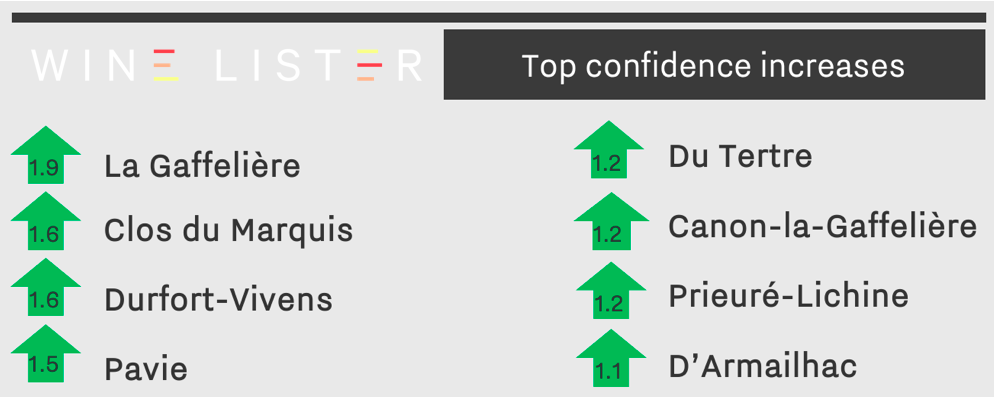
Also released during this period: Fieuzal, Fieuzal Blanc, Kirwan, Dame de Montrose, Meyney, Grand-Puy-Ducasse, Phélan Ségur, Beauregard, Clerc-Milon, and d’Issan
While this year’s en primeur releases are yet to kick into full gear, the past week has seen key entries from the likes of Berliquet, Pontet-Canet, Palmer, Haut-Batailley, Lafleur, and more. Reporting on a shorter week of releases than usual due to the French bank holiday on Thursday 26th May, we examine the latest 2021s to market.
Released on Tuesday 24th May at £38.15 per bottle, Berliquet achieves its highest-ever combined score from Wine Lister partner critics, Antonio Galloni and Neal Martin (Vinous), who both award 91-93 points. While up on the last two years’ release prices, one top UK merchant has informed us that this is understandable at this stage in Berliquet’s progression, especially considering the comparable rise in quality and pricing from its Chanel siblings, Rauzan-Ségla and Canon.
This was followed shortly by Pontet-Canet 2021, which is so far being offered at around £74.17 per bottle. While slightly up on last year’s release price, it still poses as a good-value pick relative to its appellation, especially considering its status as the sixth-highest scoring Pauillac according to WL score (see here).
Also entering the market on Tuesday, Palmer’s 2021 vintage is another stand-out offering from the estate, reminding the Wine Lister team of a Palmer from the 1990s, but with more energy and ripeness. At £237 per bottle, the 2021 opens 1% below the 2020 release price, while volume released is down 30% this year. This, alongside strong critics’ scores and a propitious renovation programme currently underway, should no doubt encourage the success of the latest release.
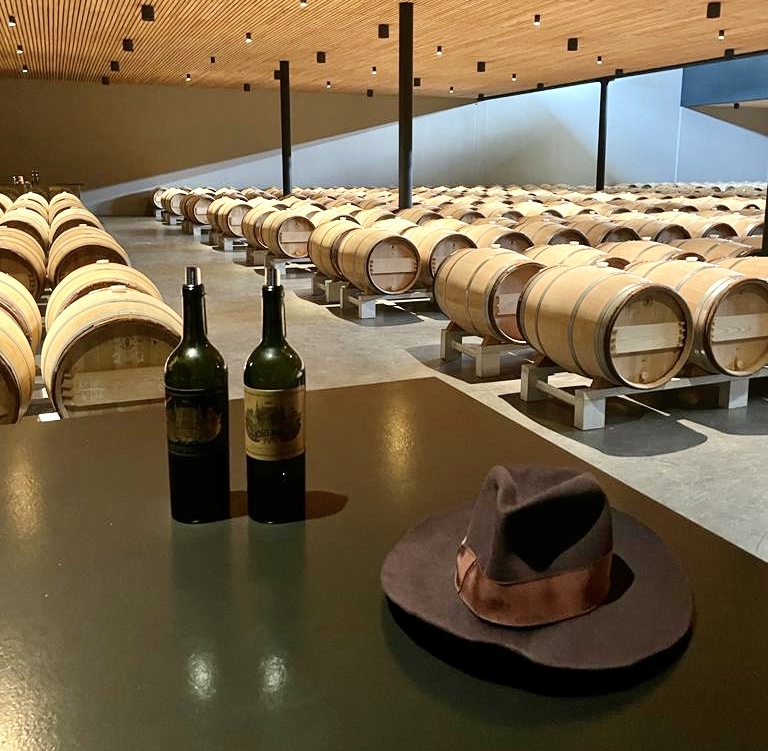 This week saw releases from Palmer – tasted by the Wine Lister team in the cellar
This week saw releases from Palmer – tasted by the Wine Lister team in the cellar
Released on Wednesday 25th May, Haut-Batailley 2021 is so far being offered at around £39 per bottle (slightly down on the 2020 release price). As with the other Cazes properties, mildew pressure has impacted the yields in 2021, and volume produced is down 10% compared to the 2020. Its sibling in Saint-Estèphe, Les Ormes de Pez 2021 followed suit, and is so far being offered at around £18 per bottle – also fractionally down on last year’s release.
Finishing the week with a bang, Lafleur 2021 was released on Friday 27th May through its UK agent, Justerini & Brooks at £542.33 per bottle. While entering the market 3% and 12% up on the 2020 and 2019 release prices respectively, there is no remaining availability of last year’s release on the market, and the 2019 has more than doubled in price since its release. As the second-best Quality performer of red Bordeaux in 2021 (after Cheval Blanc), and with a history of consistent and impressive price performance post-release, this will be one of the best buys of the campaign for those lucky enough to get their hands on it.
Also released during this period: Sociando-Mallet, Laroque, Alter Ego, Clos du Marquis, and Nénin.












